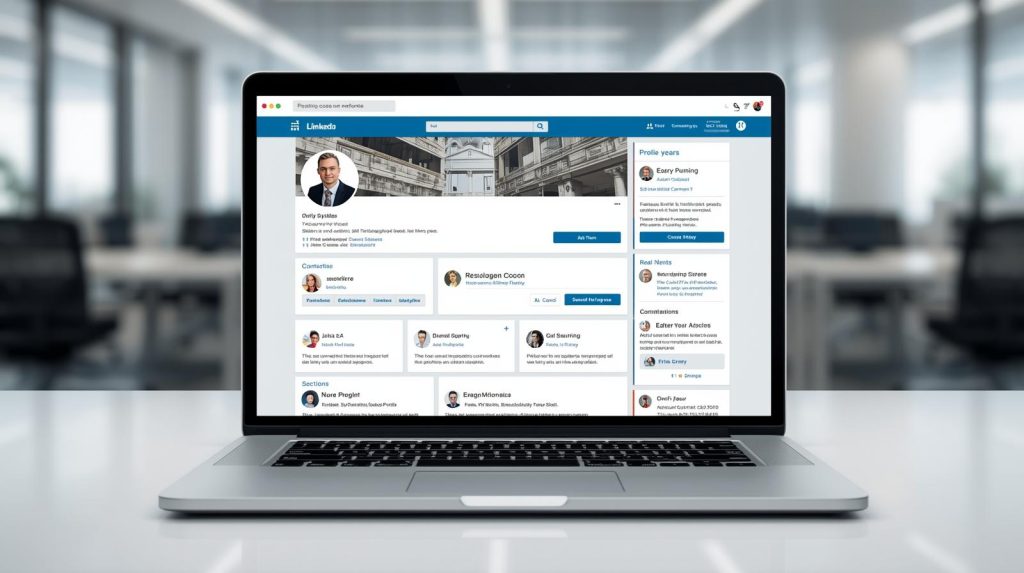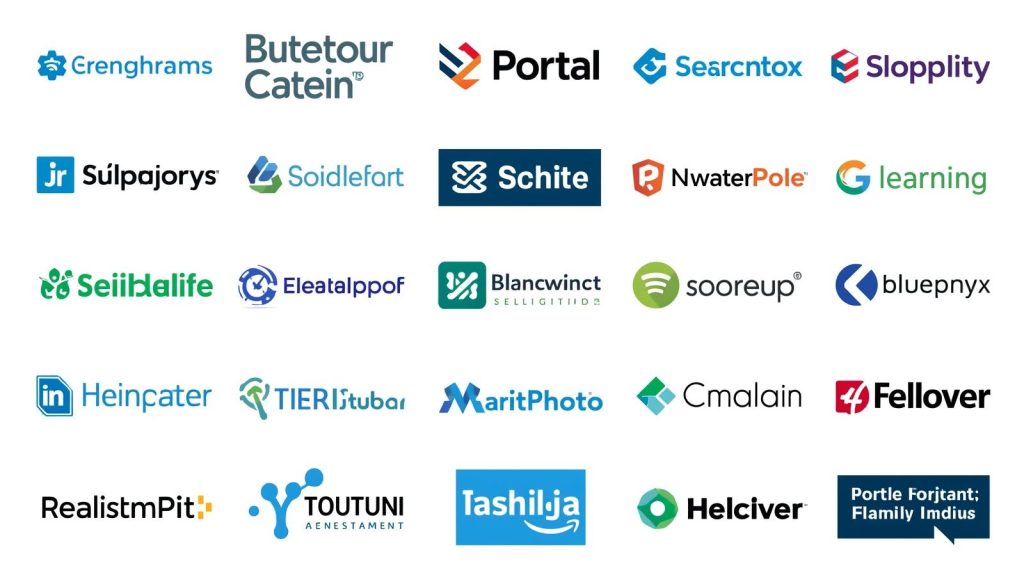Introduction
Nowadays finding a job is tougher than it was earlier. Competition has increased in every field and the nature of jobs has also changed because of automation and AI. Now a degree is not enough for getting a job, you must have skills and strategy as well.
This article will not tell you just how to get a job, it will help you to get a job in the fast and smart way. In this article, you will get proven strategies which will make your job search process easy, effective, and result-oriented.

1. Update and Polish Your Resume to Get Job Fast
In today’s time, the importance of a resume is still the same as before. Even if you have a LinkedIn profile or online portfolio. It is a document that provides a short and clear summary of the skills and achievements of your career. The recruiter sees the resumes at the very first for shortlisting any candidate. A good resume shows professionalism, communication skills, and attention to detail. It allows you to present yourself in the best way possible. Whether you are applying from ATS or directly, a resumes are your first impression – and as we all know ‘first impression is the last impression’.
Understand the 2025 Resume trend
At present – it is not just a formal document, it’s a part of your personal branding. Now recruiters prefer a simple, clear, and job-specific resumes over a cluttered or overdesigned resume.
a. One-page resume
Hiring managers have to review thousands of resumes, so they don’t have much time, and they don’t want to waste more time on understanding a single resume. It should be one page so that any hiring manager can read it in less time, and your resume should be to the point. So make a one-page resume which will be clear to the point, and impactful.
b. Optimized resume
Sending the same resume for every job is not a good idea. You have to customize according to the job description, so that you do not get rejected in ATS (Applicant Tracking System) and the hiring manager also likes your resume. Make a Resume that matches your skills, experience, and achievements with the job description. This way, it also shows your professionalism and seriousness.
c. Keyword optimization
Most companies now use Applicant Tracking Systems (ATS) to filter resumes before a human ever sees them. These systems scan resumes for relevant keywords. If your resume doesn’t include the right terms from the job description, it may get rejected automatically. So, it’s important to include industry-specific and job-specific keywords to pass the ATS screening.
d. Quantified achievements
Giving an overview of your work will not work now; you have to be specific about what you have done before. For example, if you have increased sales, then you have to be specific that you increased 30% of sales in 6 months.
Adding numbers, adds value to a it and it also increases the impression on the hiring manager.
e. Modern layout
A cluttered or outdated resume design can turn recruiters away. In 2025, a clean, professional layout is essential. Use simple fonts (like Calibri, Arial, or Roboto), clear spacing, and avoid heavy colors or graphics — especially if you’re applying through an ATS. Make sure your resume looks good on both desktop and mobile.
By following these trends, you can create a resume that not only grabs the recruiter’s attention but also passes AI filters and stands out in a competitive job market.

2. Optimize Your LinkedIn Profile to Get Job Fast
Sending a resume is not enough; you must also create a strong online presence. LinkedIn is one of those platforms where you can build your professional brand. Recruiter checks your LinkedIn profile because here they know about your skills and achievements in one place only. On LinkedIn, you cannot only apply for a job, but you can also connect with recruiters, talk to them, and follow your dream company. The recruiters are active on LinkedIn every second, that’s why if you are searching for a job, then LinkedIn can be a game-changer for you.
To make it effective, start with a professional profile picture and a clear, keyword-rich headline that reflects your role or target position (e.g., “Aspiring Digital Marketer | Content Creator | SEO Enthusiast”).
Let’s see in detail;
a. Professional Profile Picture
Your profile photo is the first thing people notice. Make sure it’s:
- High quality (clear, not pixelated)
- Professionally dressed.
- Friendly and approachable expression.
- Clean background.
Tip: Avoid selfies or party photos — go for a simple headshot with good lighting.
b. Catchy & Clear Headline
Your headline doesn’t have to be just your job title. Use it to show your value, skills, and target role.
Examples:
“Unemployed | Looking for work”
“Content Writer | SEO Specialist | Helping Brands Grow with Engaging Content”
A good headline grabs attention and helps you appear in searches.
c. Strong About Section (Summary)
This is where you tell your professional story. Use simple language to cover:
- Who you are?
- Your top skills and experience.
- Your goals or what you’re looking for?
- A call to action (e.g., “Open to new opportunities” or “Let’s connect!”)
- Use short paragraphs or bullet points to make it easy to read.
d. Experience & Roles
Don’t just list job titles — explain what you actually did. For each role:
- Mention your key responsibilities
- Highlight accomplishments
- Add numbers or results when possible.
- “Increased blog traffic by 60% in 6 months through SEO strategy and content updates.”
This helps recruiters understand your impact.
e. Skills & Endorsements
Add relevant skills to your profile — LinkedIn allows up to 50, but focus on your top 10–15. Ask colleagues or past clients to endorse your top skills to build credibility.
Pro Tip: Match your skills to the jobs you’re targeting.
f. Recommendations
Recommendations are like reviews for your work. Politely request a few from:
- Former managers
- Teammates
- Clients or mentors
Sample Message:
“Hi [Name], I really enjoyed working with you on [Project/Team]. If you’re comfortable, would you be open to writing a short recommendation for me here on LinkedIn?”
g. Featured Section of LinkedIn
This section lets you showcase your best work. You can add:
- Articles or blog posts
- Your resume
- Portfolio links
- Certificates
- Key LinkedIn posts
It’s a great space to make your work visual and clickable.
h. Certifications & Courses
Have you taken online courses or earned certificates (from Coursera, Udemy, Google, etc.)? Add them to show you’re actively learning and staying updated in your field.
Example:
“Google Digital Marketing Certification – Completed June 2025”
Custom LinkedIn URL
By default, your LinkedIn profile URL has random numbers and letters. Make it short and professional by customizing it.
How to:
Go to your profile → Click “Edit Public Profile & URL” → Customize your URL
Example: linkedin.com/in/priyakumari
This is easier to add to resumes, business cards, or email signatures.

3. Use the Right Job Portals to Get Job Fast
A job portal is a platform, or website that connects candidates with employers. These portals make the job search process easy and fast, providing candidates with the opportunity to apply for jobs that match their preferences.
Top Job Portals for Job Seekers
a. Best Job Tool
It is the best job search platform to find relevant jobs according to your skills and interests. It is a dynamic job search platform dedicated to connecting talented individuals with leading employers across various industries.
Key features :
- Has a user-friendly interface.
- Provide comprehensive resources to help job seekers find their ideal roles.
- Offer detailed job descriptions, including responsibilities, qualifications, and requirements.
- Ensure candidates have all the information they need to make informed career decisions.
- You get the opportunity to work with a global client.
Explore top job opportunities and advance your career with Best Job Tool.
b. LinkedIn
The first one is LinkedIn. It is a professional networking platform where people create their professional profiles to showcase their skills, experience, and achievements. This is the best platform for finding professional jobs.
Key features:
- You can connect with the industry experts, recruiters, and professionals.
- You can use your LinkedIn profile as a digital resume.
- You can see all the information about the company and its job openings by following them.
c. Naukri.com
When we talk about job search in India, Naukri.com is the first name that comes to mind. It’s one of the oldest and most popular job portals, trusted by millions of job seekers and recruiters for over two decades.
Key features :
- It suggest best jobs with the help of AI.
- Get alerts of relevant jobs by setting preferred location, salary, and job type.
- Check score of resume and improve profile with the tips provided by Naukri.com.
d. Indeed
Indeed is a job search engine that collects job listings from thousands of websites, company career pages, and job boards. Here, you can upload your resume and search for jobs using filters like location, salary, and experience.
Key features :
- You can find lakhs of jobs for every industry and location.
- It’s free to upload a resume and apply to jobs.
- You can find targeted jobs by applying filters like location, salary, job type, and experience.
e. Flex Jobs
A trusted platform that offers hand-screened remote, part-time, and freelance jobs across various industries. It’s ideal for professionals looking for flexible work options.
Key features:
- All jobs get checked manually on FlexJobs – no scams, only trusted and genuine jobs.
- You can easily search for jobs according to location, type, schedule, and industry with the help of a filter.
- Here you can mostly find remote, hybrid, part-time, and freelance jobs.

4. Networking : The Hidden Job Market
Hidden job market means the opportunities which does not post publicly on any websites or portals such as LinkedIn. People get to know about these jobs, when they talk to any employee of the company, if someone has refer., or if anyone has talked directly with HR. Many companies hire candidates internally through their network., without posting officially. That’s why it is important to start networking, do cold emailing, and stay active on LinkedIn to know about these hidden jobs.
How to Find Hidden Job (That Never Make It to Job Boards)?
a. Networking: Your Most Powerful Tool.
Networking is very important in job hunting because, with the help of networking, you can reach those hidden job that are sometimes unavailable on job portals. Many companies hire candidates internally or through referrals, which means that if you have a strong network, you will be aware of those jobs. You get real industry insight from networking, like which skills are in demand, what the company’s culture is, or what the expectations of a specific role are. When you interact with a professional, it also boosts your confidence and improves your communication skills. Which helps in your interview.
b. Cold Outreach: Contacting Companies Directly
You can also find hidden jobs by contacting them directly; style and tone are also important. When you approach any professional through LinkedIn or email, first give your short interview – who are you, what is your occupation, and what is the purpose of connecting. Keep the message short, polite, and personalized.
c. Use LinkedIn Like a Pro
Your LinkedIn profile is your digital first impression — it’s often the first place recruiters and potential employers check before contacting you. To make it effective, start with a professional profile picture and a clear, keyword-rich headline that reflects your role or target position.
Write a strong summary (About section) that tells your career story — include your skills, achievements, and what kind of opportunities you’re seeking. Make sure to add detailed experience, even if it’s freelance work, internships, or college projects.
d. Attend Industry Events
If you are seriously looking for a job, then only applying online is not enough. Networking events like job fairs, industry meetups, webinars, seminars, or LinkedIn live sessions give you opportunities to meet real professionals. It is very helpful for your career.

5. Improve Interview Skills to Get Job Fast
An interview introduction where you find your next step to build your career. If you are not prepared, then you will waste your best opportunity.
Interview questions preparation is important because,
- It gives you confidence to speak.
- You already know how to answer these questions.
- Your answer looks more professional and impactful
- Nervousness and hesitation reduce automatically
When you go prepared, you show the best version of yourself, and that confidence impresses the interviewer. When you already know the common interview questions and how to answer them, it naturally boosts your confidence and helps you respond clearly and fearlessly during the interview. Also, preparing before the interview can give you big results.
Conclusion
This article covered the most effective and proven strategies to help you get a job fast — from creating a professional resume and optimizing your LinkedIn profile to networking smartly, writing personalized cover letters, and preparing confidently for interviews.
By following these steps, you’ll not only speed up your job search but also increase your chances of finding the right job that matches your skills and goals.
Remember, success in job hunting comes from consistent effort, learning from each application, and staying positive throughout the process. With the right strategy and mindset, your next opportunity is closer than you think.



